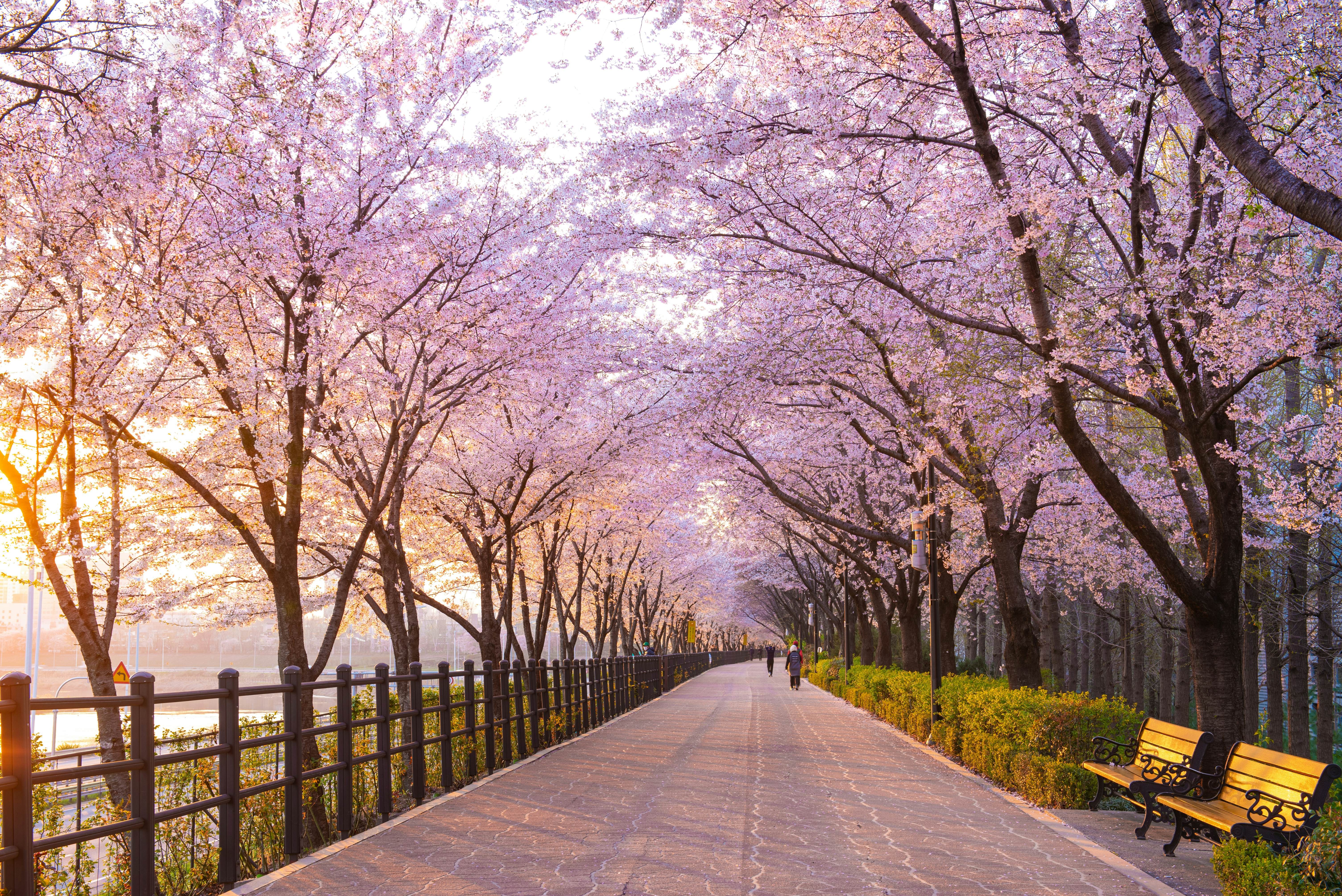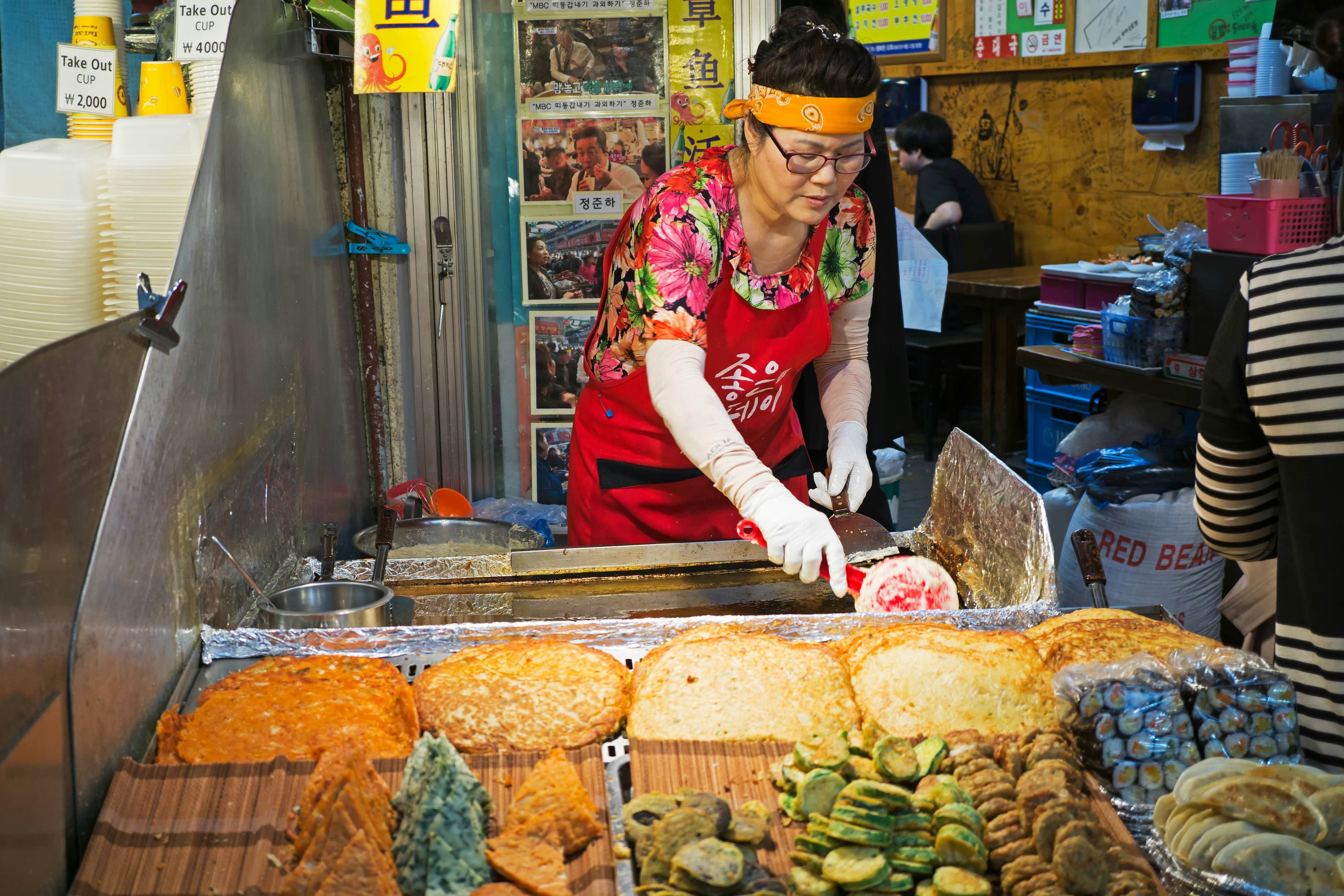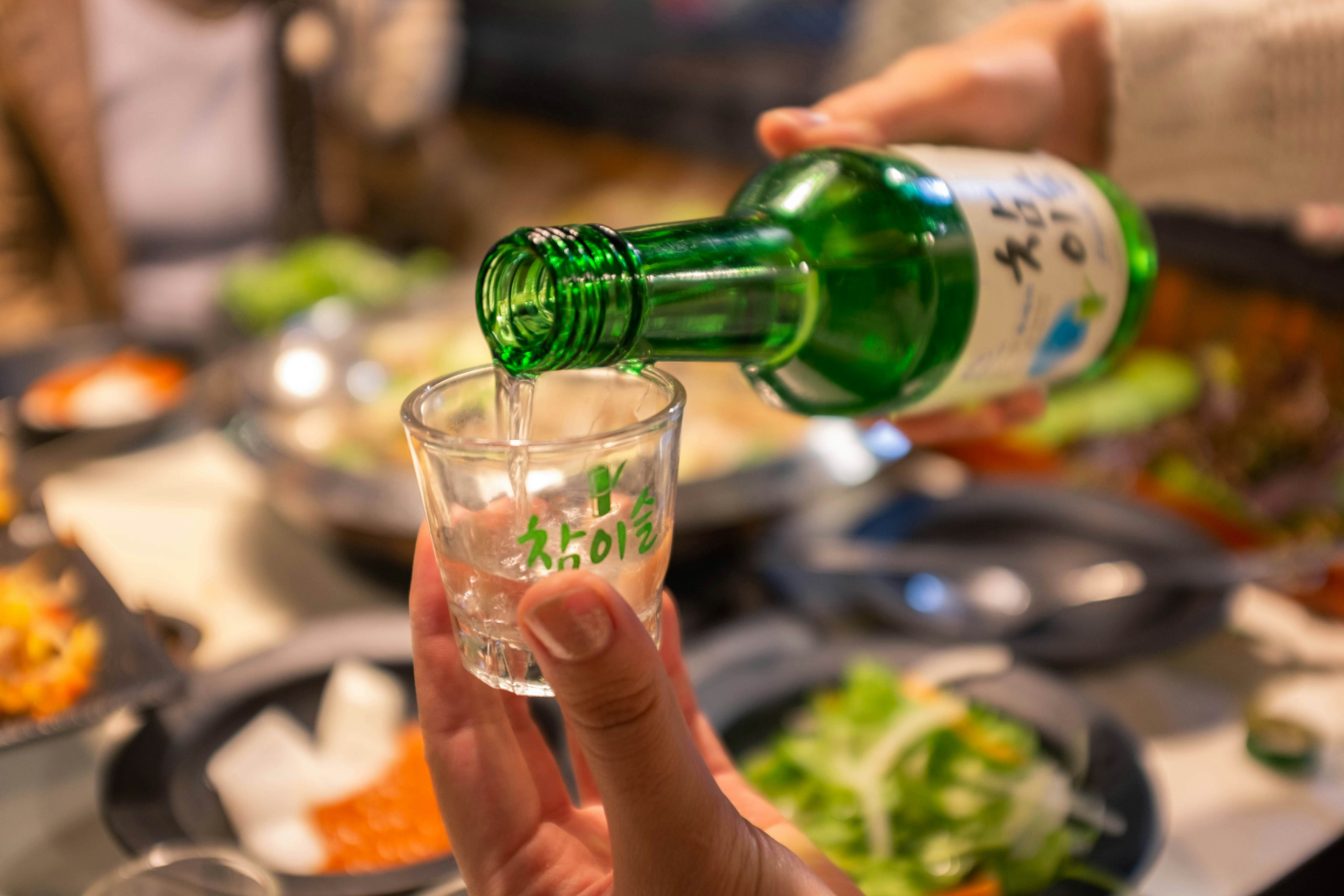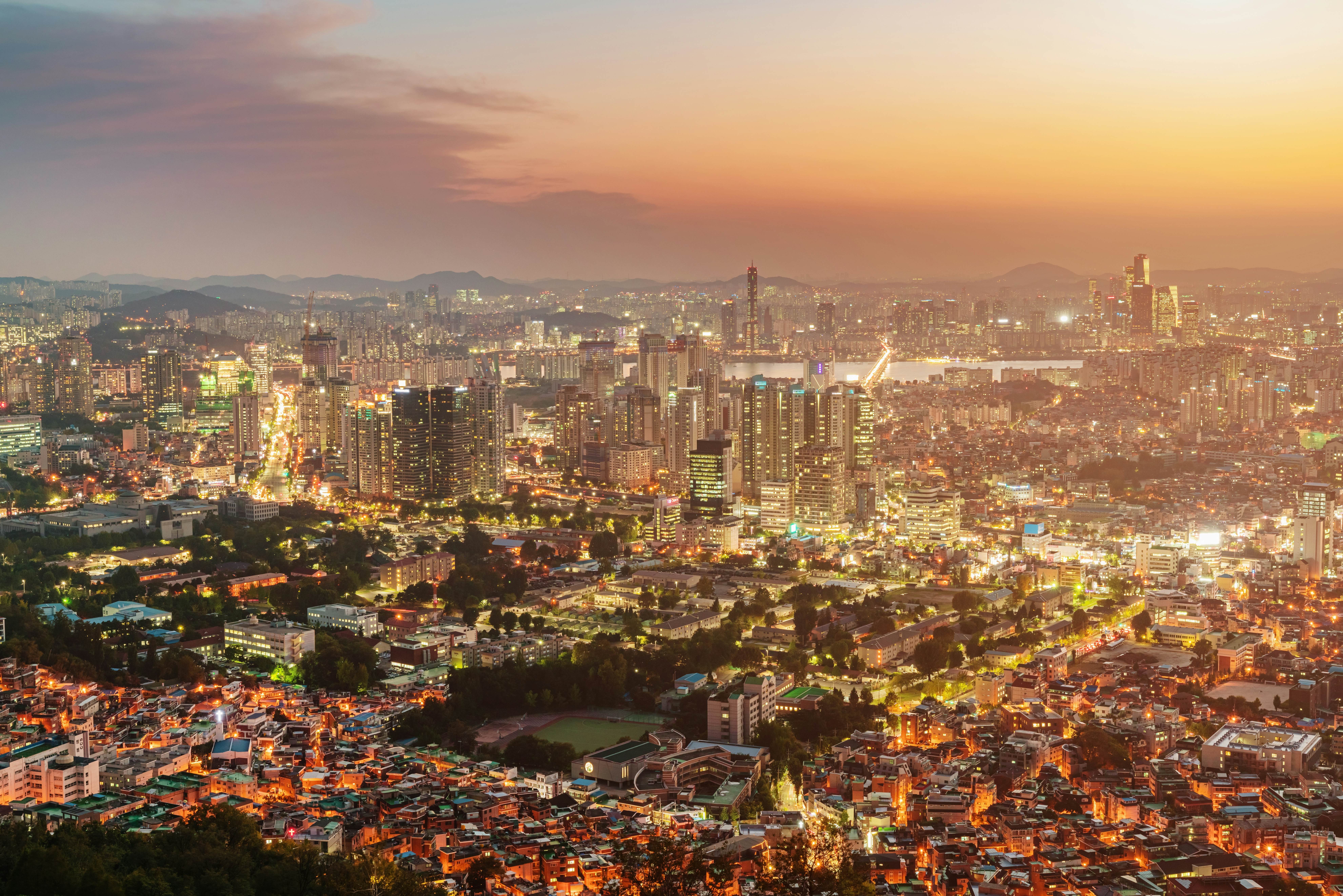Are you dreaming of exploring South Korea’s vibrant culture, delicious cuisine, and stunning landscapes? Planning ahead is key, and What To Do Before Traveling To South Korea includes crucial steps like securing your K-ETA, understanding transportation, and more. TRAVELS.EDU.VN is here to guide you through every detail so you can ensure a smooth, enriching, and unforgettable adventure. We provide essential travel planning resources and tips to help you navigate South Korea with ease. Let’s get started on your hassle-free journey!
1. Secure Your K-ETA and Visa Requirements
Are you aware of the current visa regulations for South Korea? For many nationalities, including citizens of the US, Australia, and the UK, a visa isn’t required for stays up to 90 days (Canadians can stay up to six months). However, the Korea Electronic Travel Authorization (K-ETA) is a must.
- What is the K-ETA? The K-ETA is an electronic travel authorization that allows eligible travelers to enter South Korea for tourism, business, or other permitted purposes without a visa.
- How to Apply: You need to apply for the K-ETA at least 72 hours before your departure on the K-ETA website. The process is straightforward, and the approval is generally quick.
- Validity: Once approved, your K-ETA is valid for two years from the date of approval, allowing multiple entries within that period.
Why is this important? Applying for your K-ETA well in advance ensures you won’t face any last-minute hurdles that could derail your travel plans. Don’t leave it to the last minute; get it sorted early.
2. Choose Your Ideal Accommodation
Do you know what types of accommodations are available in South Korea? South Korea offers a plethora of options to suit every traveler’s taste and budget.
- Budget-Friendly Options:
- Hostels and Guesthouses: Found in major cities and tourist spots, these offer dormitory and private rooms, often with free internet and breakfast.
- Unique Cultural Experiences:
- Hanok Guesthouses: These traditional Korean wooden homes provide an immersive experience with floor mattresses and communal bathrooms.
- Conventional Comfort:
- Hotels: From business to luxury, hotels are abundant in urban centers and popular areas like Jeju-do.
- Adventurous Stays:
- Glamping: Near national parks and coastal areas, glamping offers a blend of nature and comfort.
- Spiritual Retreats:
- Templestay: Experience life as a monk and learn about Buddhist practices in serene temples. Templestay programs are available across the country.
 Cherry trees in bloom on either side of a wide pathway with benches in Seoul, South Korea
Cherry trees in bloom on either side of a wide pathway with benches in Seoul, South Korea
Visiting Seoul during cherry blossom season offers breathtaking views.
Where should you stay? Depending on your interests, consider these popular areas:
| Accommodation Type | Location | Average Price (USD per night) |
|---|---|---|
| Hostel | Seoul (Hongdae, Itaewon) | $20 – $40 |
| Hanok Guesthouse | Jeonju Hanok Village, Bukchon Hanok Village (Seoul) | $50 – $150 |
| Business Hotel | Gangnam (Seoul), major business districts | $80 – $200 |
| Luxury Hotel | Myeongdong, Gangnam (Seoul), Haeundae (Busan) | $200 – $500+ |
| Glamping Site | National Parks (e.g., Jirisan, Seoraksan), coastal areas | $100 – $300 |
| Templestay | Various temples nationwide (e.g., Golgulsa, Haeinsa) | $50 – $100 |
3. Plan Your Trip Around the Best Time to Visit
What’s the ideal season for your South Korean getaway? Spring and fall offer the most temperate and pleasant weather.
- Spring (April – May): Cherry blossoms bloom in mid-March on Jeju-do Island and typically appear in Seoul in early April. It’s a time of festivals and vibrant colors.
- Fall (September – November): The leaves of ginkgo trees turn golden in late October and early November, creating stunning vistas in cities like Seoul.
Why time your visit? The weather is ideal for outdoor activities, and you’ll witness South Korea’s natural beauty at its peak. Plus, who can resist the allure of cherry blossoms or golden foliage?
4. Be Aware of Major Holidays
Will your trip coincide with any major Korean holidays? The Lunar New Year (Seollal) and Chuseok (Korean Thanksgiving) are two significant holidays that can impact travel.
- Impact: During these holidays, Koreans travel en masse, making bus and train tickets nearly impossible to book. Many businesses may also be closed.
- Dates: The dates change each year, so check before making your travel plans.
- Alternative Plans: If you can’t avoid these holidays, base yourself in a major city like Seoul or Busan, where plenty of businesses stay open.
Why is this important? Being prepared for these holidays can save you from potential travel disruptions and ensure you have a backup plan.
5. Master the Public Transportation System
Are you familiar with South Korea’s public transportation? South Korea boasts a world-class public transportation system, including subways, trains, and buses, that are clean, convenient, and efficient.
- Subway: The Seoul metro is continually expanding, making it easy to navigate the city.
- Rail and Intercity Buses: These networks will take you to every corner of the country.
- Cost: Public transportation is affordable, with bus and subway fares in Seoul starting at around ₩1000 (less than US$1).
- Tmoney Card: Purchase a Tmoney transit card at convenience stores or vending machines in subway stations. Load money onto the card and tap it when you board and disembark.
- Longer Distances: Buy intercity bus or train tickets at stations. For high-speed KTX trains, purchase tickets in advance on the Korail website.
The Haeundae Sky Capsule in Busan.
Busan’s Haeundae Sky Capsule offers a unique view of the coastline.
Why use public transportation? It’s the most efficient and cost-effective way to get around South Korea. Plus, with plentiful English information and sensible design, it’s easy to use.
6. Download Essential Apps to Stay Connected
Which apps will make your trip easier? Staying connected is crucial, and these apps will be your best friends:
- Naver Map: Works better than Google Maps in South Korea (available for iOS and Android).
- Subway Korea: For navigating cities’ metro systems (available for iOS and Android).
- Kakao T: For taxis (available for iOS and Android).
- Papago: A translation app developed by Naver.
Why these apps? They’ll help you navigate, communicate, and get around with ease. Naver Map is essential, as Google Maps has limited functionality in South Korea.
7. Venture Beyond the Cities
Have you considered exploring rural Korea? While South Korea is known for its bustling cities, its countryside offers a different, equally rewarding experience.
- Beauty: Mountains and rivers create stunning vistas.
- Road Trips: Well-maintained roads are perfect for road trips.
- Culture: Experience a more traditional way of life, with a slower pace and an older population.
Why get out of town? Immersing yourself in the countryside provides a more complete picture of South Korea. It’s a chance to unwind and appreciate the country’s natural beauty.
8. Learn Basic Korean Phrases and the Alphabet
Are you prepared to communicate with locals? While English is widely understood, learning basic Korean phrases and the Korean alphabet (hangeul) can greatly enhance your experience.
- Hangeul: Easy to learn; King Sejong the Great declared it could be learned in 10 days. Let’s Learn Hangul offers an interactive, easy-to-follow way to learn the alphabet.
- Useful Phrases:
- 안녕하세요 (Annyeonghaseyo) – Hello
- 감사합니다 (Kamsahamnida) – Thank you
- 얼마예요? (Eolmayeyo?) – How much is it?
- 화장실은 어디예요? (Hwajangsireun eodiyeyo?) – Where is the restroom?
Why learn Korean? It shows respect and can unlock a “secret bonus level” of Korean travel. Being able to sound out letters means you can recognize words like 카페 모카 (“ka-pe mo-ka,” or cafe mocha) and 비빔밥 (bibimbap, a rice dish).
9. Prepare for Cultural Interactions
Are you aware of Korean customs and etiquette? Understanding cultural norms can help you navigate social interactions smoothly.
- Greetings: A quick bow is typical, but a handshake may also be offered.
- Personal Questions: Be prepared for questions about your age, marital status, and occupation.
- Public Behavior: Avoid excessive public displays of affection.
Why be culturally aware? It shows respect and helps you avoid misunderstandings. Being open and polite will make your interactions more enjoyable.
10. Adjust Your Expectations for Personal Space
Are you ready for a different sense of personal space? Koreans live life in a hurry and in a densely populated country.
- Nudges: Don’t expect apologies if someone bumps into you.
- Subway Etiquette: People may nudge you aside when getting on or off the subway.
Why adjust your expectations? It’s not rudeness; it’s practicality. Accepting this will help you roll with the flow and avoid frustration.
11. Dress Appropriately
What should you pack in terms of clothing? Koreans are generally relaxed about attire, but modesty is appreciated.
- Temples: While shorts are fine, avoid tank tops and miniskirts.
- Beach: T-shirts are common, but leave revealing swimwear at home.
- Tops: Korean women rarely wear low-cut tops, and female travelers may attract unwanted attention if they do.
- Tattoos: While common among young people, some bathhouses may deny entry if you have visible tattoos.
Why dress appropriately? It shows respect for local customs and helps you avoid unwanted attention.
12. Plan for Dietary Needs and Preferences
Do you have any dietary restrictions or preferences? If you have food allergies or specific dietary needs, it can be challenging to find suitable options.
- Vegetarianism/Veganism: Slowly gaining popularity, but not many restaurants cater to these diets.
- Hidden Ingredients: Many dishes contain anchovy broth or fermented shrimp.
- Vegan Options: Bibimbap (without meat), japchae (sweet potato noodles), and chaeso jeon (vegetable pancake) are often vegan. Buddhist temples often serve vegan food.
- Recommended Restaurants in Seoul: Bongeun-sa temple serves a vegetarian lunch, and Balwoo Gongyang and Sanchon are restaurants specializing in vegetarian temple food.
 A vendor at market in Seoul, South Korea
A vendor at market in Seoul, South Korea
Local markets in Seoul offer a variety of street food and produce.
Why plan ahead? It ensures you have access to food that meets your needs and preferences. Researching restaurants and learning to identify vegetarian dishes can make your trip more enjoyable.
13. Understand Korean Dining Etiquette
Are you familiar with Korean dining customs? Eating is a communal activity in South Korea.
- Communal Dining: Many restaurants, especially barbecue joints, don’t offer single servings.
- Service: Servers won’t check up on you; use the call button on each table or shout, “Yogiyo!”
- Water: Usually self-service; look for a water dispenser and metal cups.
- Payment: Take the check to the front counter to pay. No tipping.
- Shoes: Some traditional restaurants require you to remove your shoes.
More Restaurant Etiquette
- Chopsticks: Don’t stick your chopsticks upright in a bowl of rice or pass food from one pair of chopsticks to another.
- Eating with your fingers: Don’t touch food with your fingers, except when handling ssam (lettuce leaves).
- Filling your own glass (with alcohol): Dining companions usually pour drinks for each other – never for themselves. It’s polite to use both hands when pouring or receiving a drink.
Why learn dining etiquette? It shows respect and ensures you participate appropriately in communal meals.
14. Learn About Korean Drinking Culture
What should you know about Korean drinking culture? Hoesik – gatherings to eat and drink together – are common, especially among work colleagues.
- Soju: The most common drink; often ethanol mixed with water and flavoring. Be careful of “soju bombs.”
- Anju: Bar snacks; often oil-soaked food like French fries or fried chicken. Chimaek is a popular combo of chikin (fried chicken) and maekju (beer).
- Changing Attitudes: Younger people are increasingly opting for coffee shops or convenience stores instead of heavy drinking.
 Pouring soju in glass
Pouring soju in glass
Soju is the drink of choice for many social gatherings in South Korea.
Why learn about drinking culture? It helps you understand social dynamics and avoid excessive alcohol consumption.
15. Consider a Visit to the DMZ
Are you interested in a unique historical experience? Despite international headlines, South Koreans don’t worry about an attack from North Korea, and neither should you.
- DMZ Tours: A guided tour to the DMZ (Demilitarized Zone) can be a fascinating experience.
- Geopolitical Stakes: Witness South Korean soldiers looking at North Korean soldiers looking at you.
- Stepping Foot in North Korea: Many tours offer a chance to step foot in the world’s most secretive country.
Why visit the DMZ? It provides a unique perspective on the geopolitical situation and offers a rare opportunity to see the border between North and South Korea.
16. Monitor Air Quality
Should you be concerned about air quality? Air quality can occasionally drop to unhealthy levels, especially in spring.
- Masks: Carry a mask.
- Apps: Download an app like IQAir Air Visual (for iOS or Android) to track current conditions and forecasts.
 Sunset with haze over the mountains in Seoul, South Korea
Sunset with haze over the mountains in Seoul, South Korea
Seoul can experience hazy conditions, particularly during certain times of the year.
Why monitor air quality? It allows you to take precautions to protect your health.
17. Be Mindful of LGBTIQ+ Acceptance
What is the attitude towards LGBTIQ+ individuals in South Korea? South Korea remains a conservative society, and anti-LGBTIQ+ prejudice is common.
- Attitudes: LGBTIQ+ travelers are more likely to encounter curious questions than open hostility.
- Public Displays of Affection: Generally frowned upon (even for straight couples).
- LGBTIQ+ Friendly Areas: Seoul has small gay districts in Itaewon and Jongno-3-ga, while the Hongdae-Sinchon-Ewha university corridor is another place where LGBTIQ+ Koreans feel comfortable being themselves.
Why be mindful? It helps you navigate social situations with sensitivity and awareness.
18. Keep Emergency Numbers Handy
What should you do in case of an emergency? Theft and violent crime are rare in South Korea, but it’s always wise to be prepared.
- Emergency Numbers:
- 112: Police
- 119: Emergency services
- 1330: Korea Travel Hotline (interpreter and connection to appropriate service)
Why keep these numbers handy? It ensures you can quickly get help in case of an emergency.
FAQ: Preparing for Your Trip to South Korea
- Do I need a visa to visit South Korea?
- Many nationalities, including US, Australian, and UK citizens, can visit South Korea visa-free for up to 90 days. Canadians can stay up to six months. However, you need a Korea Electronic Travel Authorization (K-ETA).
- How do I apply for the K-ETA?
- Apply online at the K-ETA website at least 72 hours before departure.
- What is the best time to visit South Korea?
- Spring (April-May) for cherry blossoms and fall (September-November) for colorful foliage.
- What are the major holidays I should be aware of?
- Lunar New Year (Seollal) and Chuseok (Korean Thanksgiving). Travel can be difficult during these times due to mass travel.
- How do I get around South Korea?
- Use the efficient public transportation system, including subways, trains, and buses. Purchase a Tmoney card for easy travel.
- Which apps should I download for my trip?
- Naver Map, Subway Korea, Kakao T, and Papago.
- Is it safe to drink tap water in South Korea?
- Tap water in South Korea is generally safe, but many people prefer to drink bottled water.
- What is the currency in South Korea?
- South Korean Won (₩). Credit cards are widely accepted, but it’s good to have some cash for smaller establishments and markets.
- What kind of electrical adapter do I need in South Korea?
- South Korea uses Type A and Type F plugs. The standard voltage is 220 V, and the frequency is 60 Hz.
- What should I do if I have a medical emergency in South Korea?
- Call 119 for emergency services or visit a local hospital. Many hospitals in major cities have English-speaking staff.
Let TRAVELS.EDU.VN Handle Your South Korea Travel Plans
Planning a trip to South Korea can be overwhelming. TRAVELS.EDU.VN is here to make the process seamless and enjoyable. We offer:
- Customized Itineraries: Tailored to your interests and budget.
- Handpicked Accommodations: From cozy guesthouses to luxurious hotels.
- Expert Guidance: Insider tips and recommendations to enhance your experience.
- 24/7 Support: We’re here for you every step of the way.
Ready to embark on your South Korean adventure? Contact us today to start planning your dream trip!
Contact Information:
- Address: 123 Main St, Napa, CA 94559, United States
- WhatsApp: +1 (707) 257-5400
- Website: TRAVELS.EDU.VN
Don’t miss out on the opportunity to explore South Korea with ease and confidence. Let travels.edu.vn be your trusted travel partner.